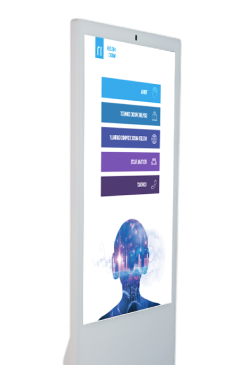

Event Solutions

Our Work

3 Crucial Elements Needed For A Digital Transformation
The definition of a digital transformation is the use of technology to fundamentally improve the performance or influence of an enterprise. And yes, it is a hot topic for corporations across the earth. Executives in all trades are using digital developments such as analytics, mobility, social media, and smart implanted devices as well as refining their use of traditional technologies such as ERP to change buyer relationships, internal procedures, and value proposals. Other officials, seeing how fast digital technology disrupted media businesses in the past decade, know they need to pay close attention to changes in their industries as of now and forever. In this blog, we highlight some of the ways that corporations are making a digital transformation.
Buyer Touch Points Customer service can be improved considerably by using digital initiatives. For instance, a bank set up a Twitter account to answer client criticisms quickly, helping clients avoid going physically to a local branch. This digital initiative also leveraged a skillful community, allowing crowdsourcing with numerous employees and other clients. Brands with multiple digital channels to the customer are facing pressure to deliver an integrated experience. Multichannel services require visualizing and implementing change across customer experience and internal operational procedures. Several stores now offer home shopping with the choice to receive products by mail or in a store. On the other hand, we’ve seen customers being angry that the customer service representatives in the store could not obtain online order history. So keep that in mind as well. [embed]https://www.youtube.com/watch?v=CA4JYyr3Pf4[/embed] Digitally Modified Industries We’ve realized that if companies don’t alter the way we do business, they’re going to die. It’s not about altering the way you do technology but shifting the way we do business. Find ways to augment physical with digital offerings and to use digital to share media and marketing content across structural silos. A grocery company is staying true to its traditional business but using digital to transform a new growth business. As one executive reported, “After two years, their e-commerce platform is bringing the 20% of our new clients and their traditional customers are consuming 13% more on average. New Digital Revenue Another way we see brands creating a digital transformation is by also presenting digital products that match traditional products. For instance, a sports apparel manufacturer began selling GPS and other digital devices that can track and account for a purchaser’s workout. Other businesses are changing corporate models by reshaping their margins through digital. A mortgage brand is moving from being just a link in the value chain to becoming a global assembler of investment products. An airport authority is targeting to become the owner of a traveler’s end-to-end route by providing an integrated multichannel experience, including info on airplane traffic and reservations, duty-free shopping campaigns, and additional benefits. Focus is vital to any digital transformation; the best-managed firms are continually recognizing new ways to redefine the way they do business in the digital era.